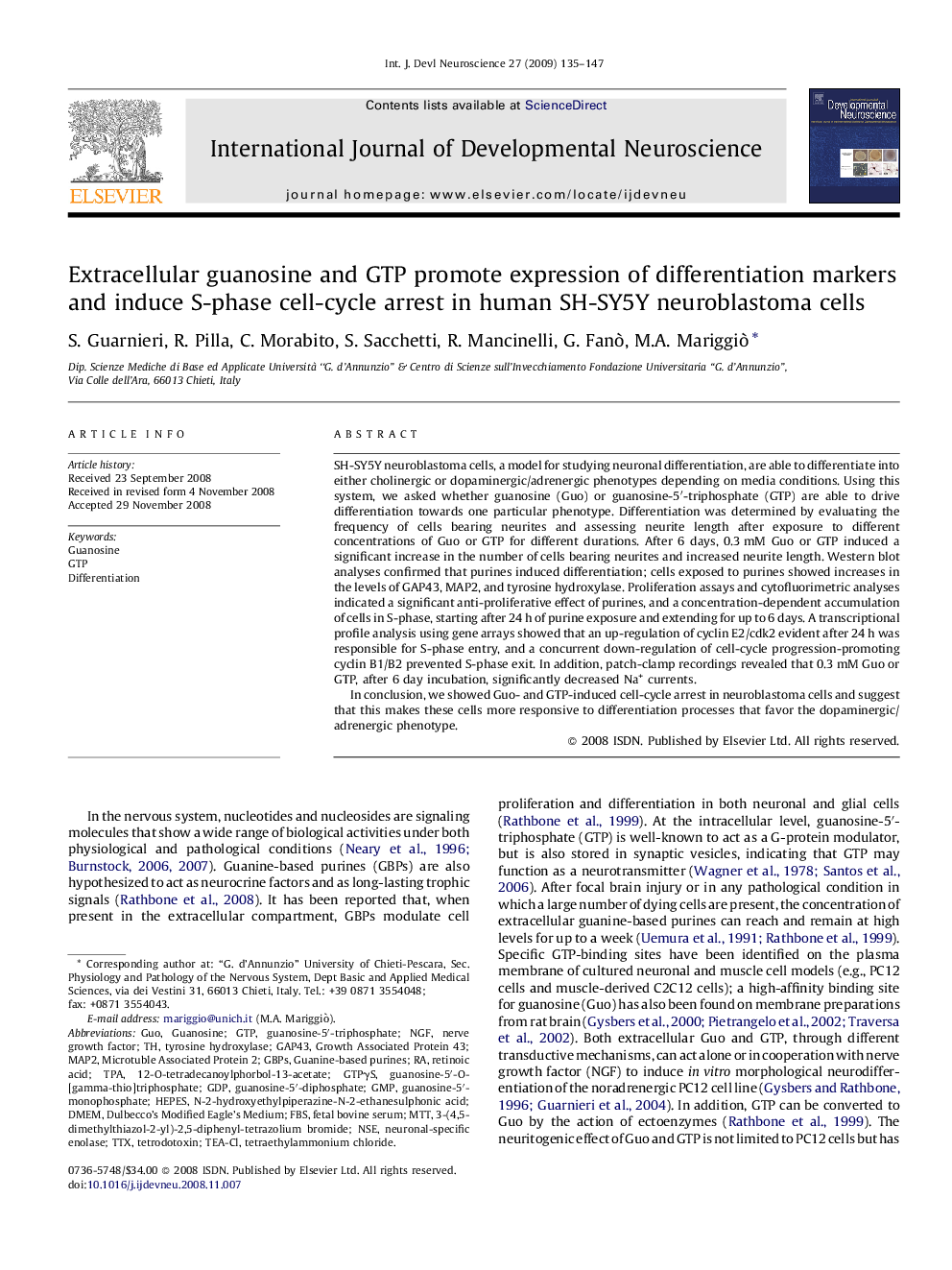| Article ID | Journal | Published Year | Pages | File Type |
|---|---|---|---|---|
| 2786438 | International Journal of Developmental Neuroscience | 2009 | 13 Pages |
SH-SY5Y neuroblastoma cells, a model for studying neuronal differentiation, are able to differentiate into either cholinergic or dopaminergic/adrenergic phenotypes depending on media conditions. Using this system, we asked whether guanosine (Guo) or guanosine-5′-triphosphate (GTP) are able to drive differentiation towards one particular phenotype. Differentiation was determined by evaluating the frequency of cells bearing neurites and assessing neurite length after exposure to different concentrations of Guo or GTP for different durations. After 6 days, 0.3 mM Guo or GTP induced a significant increase in the number of cells bearing neurites and increased neurite length. Western blot analyses confirmed that purines induced differentiation; cells exposed to purines showed increases in the levels of GAP43, MAP2, and tyrosine hydroxylase. Proliferation assays and cytofluorimetric analyses indicated a significant anti-proliferative effect of purines, and a concentration-dependent accumulation of cells in S-phase, starting after 24 h of purine exposure and extending for up to 6 days. A transcriptional profile analysis using gene arrays showed that an up-regulation of cyclin E2/cdk2 evident after 24 h was responsible for S-phase entry, and a concurrent down-regulation of cell-cycle progression-promoting cyclin B1/B2 prevented S-phase exit. In addition, patch-clamp recordings revealed that 0.3 mM Guo or GTP, after 6 day incubation, significantly decreased Na+ currents.In conclusion, we showed Guo- and GTP-induced cell-cycle arrest in neuroblastoma cells and suggest that this makes these cells more responsive to differentiation processes that favor the dopaminergic/adrenergic phenotype.
